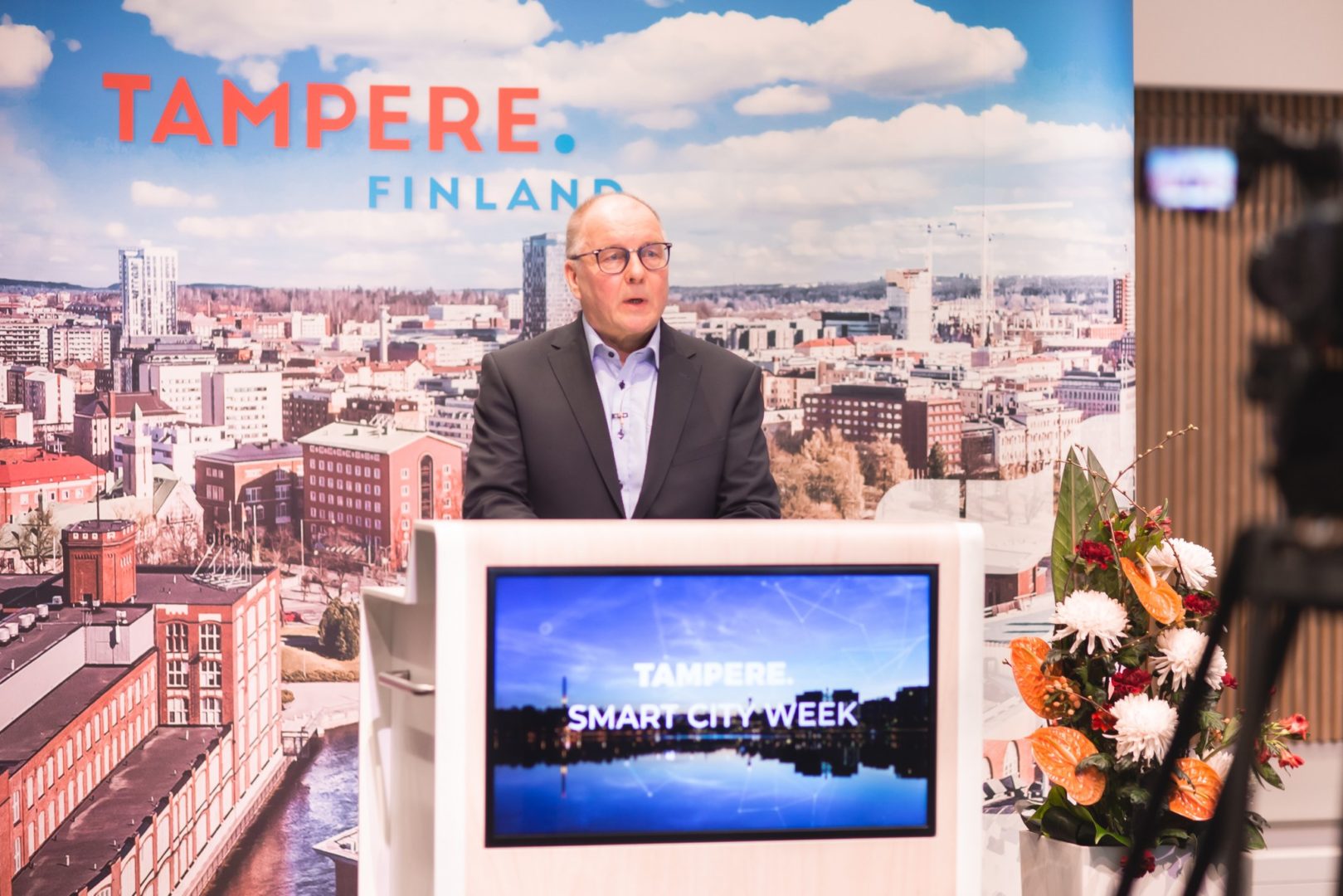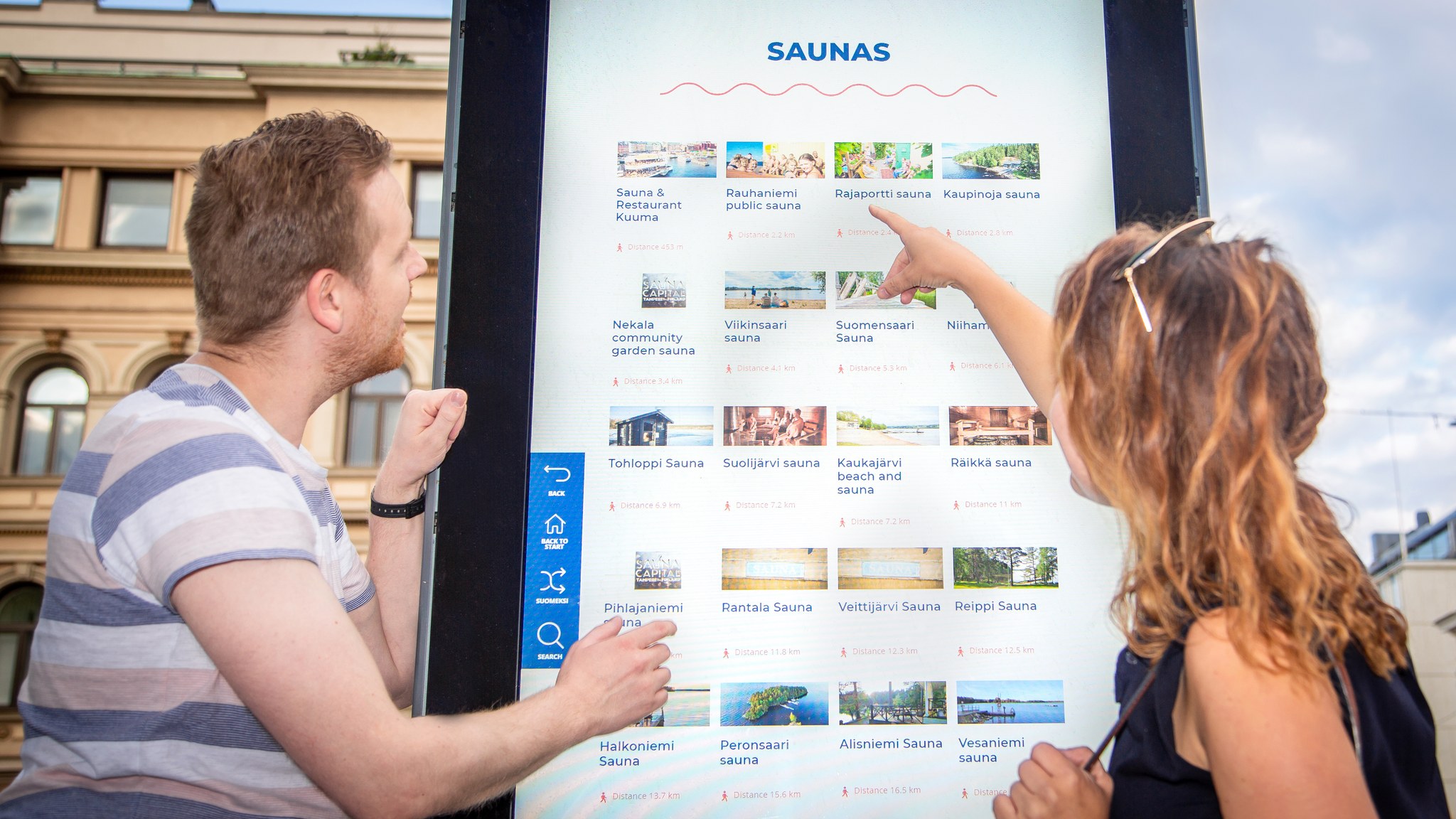Towards smart, open and dynamic Tampere
24.5.2022
The City of Tampere’s smart city journey continues with a new programme Data-driven City for Citizens where data and AI are put to service for residents and companies. As the Business Tampere Director of Smart City Development Seppo Haataja is retiring, let’s take a moment to review some milestones, both past and future.
In the course of his career, Seppo Haataja has been able to observe Tampere from several points of view: from a state research institute, a listed company in the private sector and a regional economic development agency. Haataja worked at VTT Technical Research Centre of Finland for 11 years, at Nokia exactly 17 years and almost a decade at Business Tampere making Tampere more open and smart.
Haataja’s career path also includes time in Canada as an exchange scientist and plenty of activities related to EU projects. The Open & Agile Smart Cities (OASC) network is a prime example of the cooperation that has been created (and is necessary) to develop smart cities.
– The OASC network has quickly become an important negotiation partner for the European Commission. Thanks to Seppo, Tampere has a strong position in OASC and is a desired partner for cooperation, says Business Tampere CEO Harri Airaksinen.
– As a partner for cooperation, Tampere has reached the point that we can nowadays choose the projects we are most interested in. I think we need to prioritise the ones that are genuinely useful and effective, says Haataja.
Tampere has been successful with the international dimension. The total budget of international projects is EUR 75 million. Over half of the sum is allocated to various mobility projects, a quarter to energy projects, and smaller shares to e.g. safety and security, connectivity and AI.
Business generates vitality
Haataja says he has always had a business-oriented mindset: the region’s vitality is generated by companies, especially those ones that are successful in the international level. Ecosystems are also important – back in the days innovations were usually created by companies, now they often require the joint efforts of an entire ecosystem.
And ecosystems won’t usually arise spontaneously. Regarding smart city related topics, the most important role of Business Tampere is cooperation with companies and facilitating ecosystems. This became crystal clear during the first Smart Tampere programme (2017–2021) and has not changed. Tampere’s new smart city programme is known under the title Data-driven City for Citizens.
The new period begins where the previous one ended in Tampere: some projects continue, new ones are prepared and recruitments have been made. There is a shift in Business Tampere’s focus towards AI related themes.
– Seppo has always emphasised the importance of the strategic projects portfolio that will support our ecosystem development. There is cooperation between companies, research institutions and the City of Tampere, which also serves as a platform for experiments, says Airaksinen.
Nearly one hundred need-based business development projects we conducted during the Smart Tampere programme, while also anchoring a culture of experimentation in the Tampere Region. It allowed a new kind of fruitful cooperation between public and private sector and other stakeholders.
– We are in a good position to continue experimenting and developing our smart city even further. Now is the time to dig deeper into digitalisation and data utilisation. There is both national and European funding available, says Haataja.

Smart city for citizens
The main idea of a smart city is the citizens’ good and smooth living. The new Data-driven City for Citizens programme emphasises this aspect. Companies are also necessary when building a smart city, as they have the knowledge of the latest technologies required by the smart systems.
– The focus is to develop better, more efficient and more sustainable services for the citizens, states Haataja.
When open data is utilised in a skilful way, services will be personalised, available just when and where residents need them. Utilisation of open data will also contribute to sustainability, for example managing energy consumption of buildings or traffic. Tampere aims to be carbon neutral by 2030.
Tampere and the positive cycle
Tampere is a growing and advancing city, and according to surveys the most popular place to live, study ja visit. Tampere is indeed in a positive cycle, which didn’t happen by accident and needs a cooperative mindset to keep going.
– Fortune has favoured us in Tampere, but the major driver is the enormous strength we’ve gained by working actively towards the same goals. So let’s keep it up in the future, says Haataja.
Tampere is convenient in size: on one hand small enough for people to know each other and each other’s expertises.
– This means we can get things happening in a very agile way. On the other hand, the city is large enough to have the capacity to make major future investments, says Haataja.
Author: Päivi Stenroos